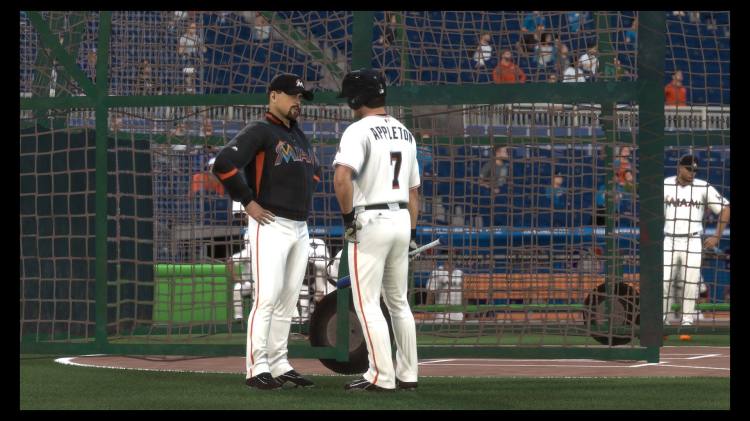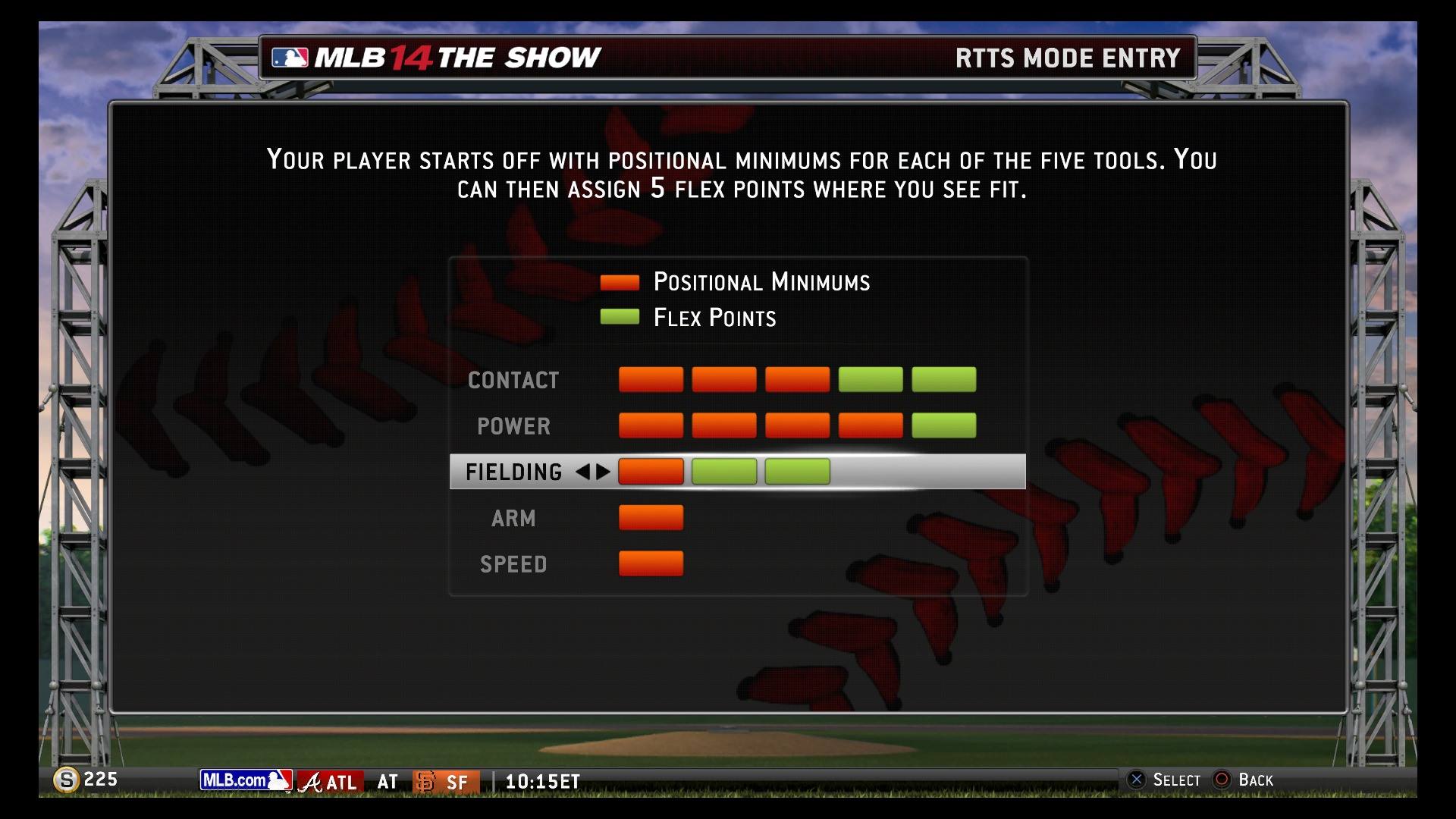Road to the Show
Road to the Show is MLB 14: The Show’s flagship mode and my personal favorite. It is easy to get frustrated if you haven’t built your character well, so here are some steps to help avoid creating a lame-duck player.
Before creation
The key to putting Major League Baseball on notice is setting a character up for success. This section isn’t 100 percent necessary, but it will give you a huge advantage before you even hit the field.
The first step is to select the proper situation for your player. If you want to play center field for the Angels, you will have to displace Mike Trout. This is an unnecessary pain in the neck. Even if you succeed, you now have one of the best all-around players in baseball riding the bench. The better option would be to pick a position of need on the Angels, like right field. You could even change Trout’s position to right field in the “Create/Edit a Player” menu before starting your Road to the Show player. Just make sure you select “current” rosters when prompted.
Once you hit the create button, always select custom build. Then follow one of three builds:
The Bomber
This is my preferred build. This player is looking to put every ball in the seats. Create a switch-hitting left fielder, first baseman, or right fielder (note: Every player you make should switch-hit). These three positions can max out contact and power before getting started, which gives players a large advantage from day one.
Make your player as short as possible. I know that a short power hitter will look silly, but height and weight don’t affect your skills like they would in the real world. Choose legend batting stance 65. This will put you as low to the ground as possible. Your strike zone will be the size of a thimble, which will create more walk opportunities.
I recommend turning off all baserunning opportunities in the mode-specific options. This guy is too slow to steal, so sitting on the bases is just a waste of time.
Pour all of your training points into the contact and power attributes. Keep contact and power versus right-handers about 5 points higher than versus left-handers. You’ll see more right-handed pitchers than lefties, so you are playing the odds here.
Vision is your next priority. This will slow down the ball for you when you are hitting. Plate discipline and clutch are also useful.
These five attributes need to be in the 60s by the time you get called up to the big leagues, which is usually at the end of your first season (or the beginning of your second).
Your focus should be on those attributes, but you can’t let the others decay. After about eight weeks, an attribute will begin to decrease. Make sure you are putting one level in each attribute every seven weeks or so.
You will be tempted to level up your fielding statistics. Stay strong. The 50 home runs you will hit at age 23 will give you plenty of training points. Spend those on whatever you want.
The Speedster
MLB 14: The Show is the first incarnation that enables you to create a Billy Hamilton-like speed threat from day one. The Speedster is a new build for me, but it works pretty well if you have the patience to draw out walks and the timing to steal properly.
Create a center fielder, second baseman, or shortstop and crank that speed stat to 5. Any leftover skill points should be used on contact. Make him a short, switch-hitter with legend stance 65.
The player will start out with a 90 in the speed attribute, which will enable him to steal 100 bases in his first season if you can get on base often enough. Make sure you take as many pitches as possible when at the plate.
The Speedster should also bunt in all sacrifice situations (man on first or second with zero or one out). A successful sacrifice will net you some points and won’t count against your batting average, and your player is fast enough to beat out some throws to first. Free hits are huge.
Once you get on base, steal. You should steal every single time you are on first. Don’t increase your lead due to the aforementioned pick-off moves. Hold R1 to lean forward from your standard lead, and crank that left stick as soon as the pitcher moves. Slide with an up-and-right flick of the right stick and dust yourself off. You just stole your first base, and thousands more are in your future.
Follow the same training-points regimen as the Bomber. Your speed stat is high enough from day one, so focus on being a better hitter. This will take some time, so don’t let a low batting average frustrate you. It will all work out.
The Control Pitcher
The image of that dominant pitcher with a cannon for an arm is endearing to baseball fans, but the Control Pitcher build bypasses flash for results.
Create a pitcher and give him a four-seam fastball, a changeup, and a slider. These are the three best pitch choices in my opinion, but they aren’t absolutely necessary.
Make sure there are 5 points in control, then use the rest to get makeup and velocity to 3. A 3 in velocity will have your fastball up in the low-to-mid 90s, which will be just fine. Break is useless when compared to effective changes in pitch speed and location.
Height and batting stance aren’t important for a pitcher, but I still go with the usual suspects. I like the crazy sidearm wind-ups, but I don’t think different stances affect the A.I. any differently.
Spend your points on upgrading your pitches for the first month or two of the season. If you can put a good pitch where you want it, it will neutralize the sting of having bad H/9 (hits per nine innings) or stamina attributes. Starters should then crank stamina up, while closers should level pitching clutch. The spending options on a pitcher aren’t as serious as a position player, so you have some freedom if you think an attribute needs more juice.


